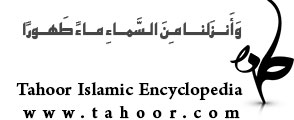
Imamism beliefs’ charter (expressive and documented explanation from Twelver shi’ism’s beliefs in one hundred and fifty principles)
This book is one of the Ayatollah Jafar Sobhani’s works and writings. The truth seekers who want learn the religious realities through the last heavenly “law-bringing” (sähebe shari’at), the Islam prophet (p.b.u.h.) and his holy progeny, with referring to this concise writing will find a bright light for themselves. They could attain the reality of Household’s school by studying this assuring corpus.
Biography of Ayatollah Ja’far Sobhäni Tabrizi
Ayatollah Ja’far Sobhäni Tabrizi was born in a scientific,#### piety and virtuous family in Tabriz in 1929.apl. 9 A.D.(1308.1.20S.H./1347.10.28A.H). Ayatollah Sheikh Ja’far Sobhani after graduation from primary education, in the schoolhouse of “Late Mirza Mahmood Fäzel, learned the literature, Gulistän(the Rose Gurden), Bostän, Mojam history, Nassäb Al-sebyän, Abväb Al-Jenän , etc. At the age of fourteen, he left for Tälebiye “theological school” of Tabriz.
His Masters:
Ayatollah Rooholläh Khomeini, Haj Sheikh Hassan Nahvi, Mirza Mohammad Ali Modarres Khiyäbäni, the author of “Reyhänat Al-Adab”, AllämeTabätabäi, etc.
He is considered one of the Islamic “Där Al-tabligh” masters of Qom that researches in the field of “Nations history” and “Islamic theology”. He also is the founder of “Islamic theology research center” (The Imam Sädegh(p.b.u.h)Education and research institute) in Qom in 1980A.D.(1359) and is one of the outstanding masters of Qom’s theological school that is excel of seminary. After death of Ayatollah Sheikh Javäd Tabrizi and with trusting to the request of some group of Azerbaijan people, entered (accept) the authority (marja’iyyat). Another one of his scientific and cultural activities:
-establishing and writing the Islamic theology encyclopedia.
-establishing Journal(magazine) and specialized center of Islamic theology.
-writing the university and seminaries textbooks and membership in Islamic encyclopedia “board of trustees”, etc.
Works:
-Al-Kotob Al-Kalamiye and Mojem Al-Motekallemin
-Mosooe’hTabaghät Al-Foghahä
-Mojam Al-Taräs and Al-Mosooe’h Al-Rejäliye
- Foroogh Abadiyat
-“Figurs” (biography) of sages (simäye farzänegän)
-Wahäbism religion
-etc.
The book structure:
This book including 10 parts and 150 principles as follows:
1- part one: the ways of knowledge in Islam (from 1-principle up to 5-principle), the universe from the viewpoint of Islam (from 6 principle up to 12 principle), Man form the view point of Islam (from 13 principle up to 26 principle),
2- part two: monotheism and its degrees (from 27 principle up to 33 principle),
3- part three: the God’s Attributes (from 33 principle up to 43 principle),
4- part four: Divine justice (from 44 principle up to 47 principle), decree and destiny ( form 48 principle up to 50 principle), Man and Free-will ( from 50 principle up to 53 principle),
5- part five: the necessity reasons of prophets’ prophetic mission (from 54 principle up to 61 principle), the prophets’ infallibility ( from 62 principle up to 69 principle),
6- part six: special prophethood (from 70 principle up to 76 principle), the features of Islam prophet’s prophecy (from 71 principle up to 82 principle),
7- pat seven: Imamate and caliphate (from 83 principle up to 94 principle), the twelfth Imam (occultation and advent) (from 95 principle up to 102 principle),
8- part eight: the world after the death (from 103 principle up to 119 principle),
9- part nine: belief, unbelief, innovation, “concealment”(taghiyye), invocation , etc (from 120 principle up to 135 principle),
10- part ten: tradition, Ejtehäd and jurisprudence (from 136 principle up to 141 principle), some disagreement cases of juridical injunctions (from 142 principle up to 150 principle).
This book has been printed and published by Imam Sadeq Institute in Qom in 1383S.H.
Sources :
Imamism beliefs’ charter (expressive and documented explanation from Twelver shi’ism’s beliefs in one hundred and fifty principles) by Jafar Sobhani